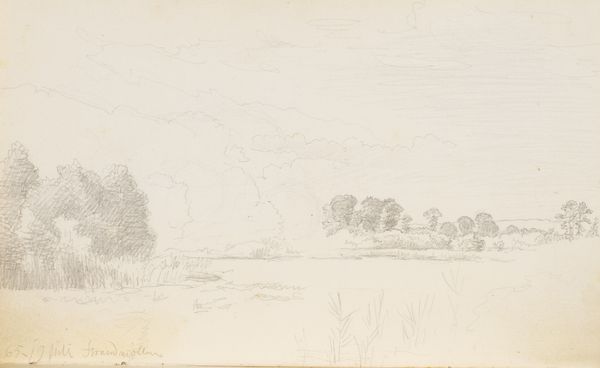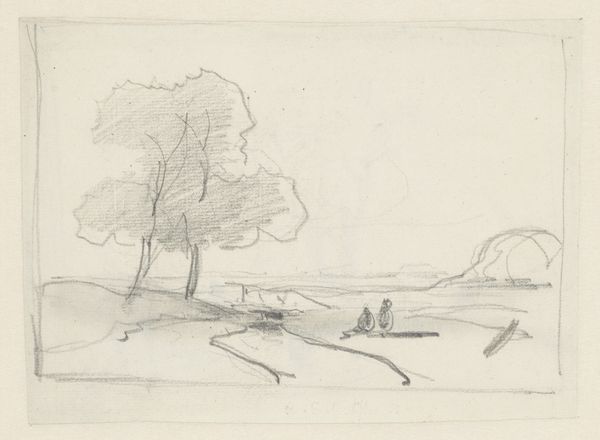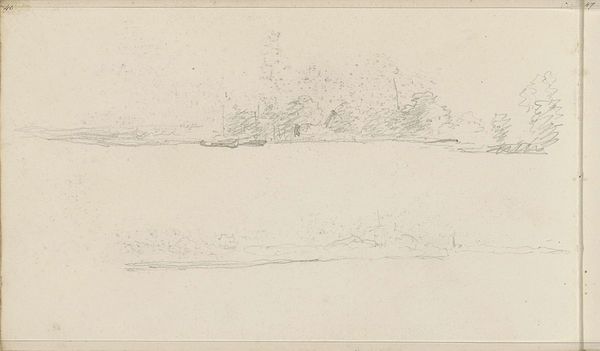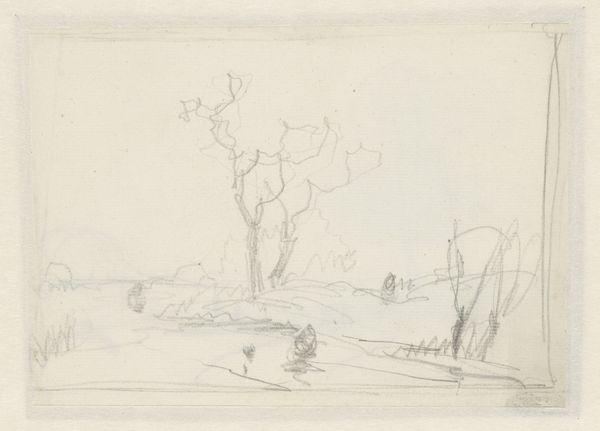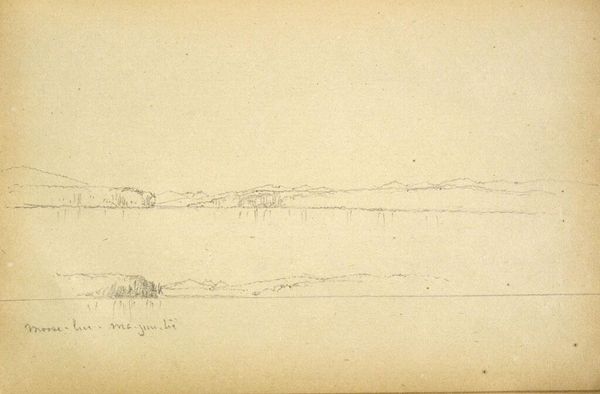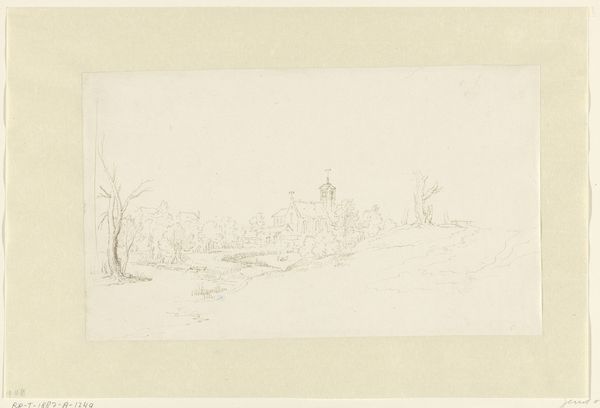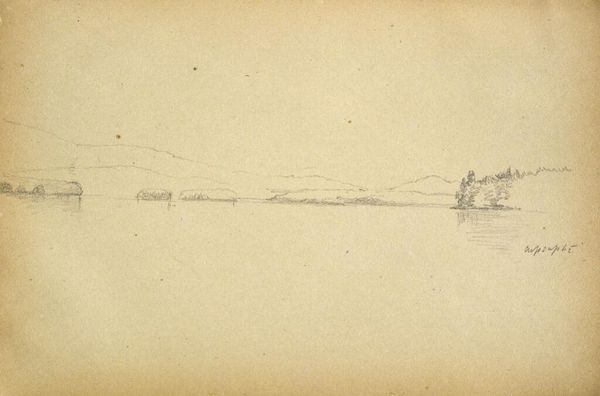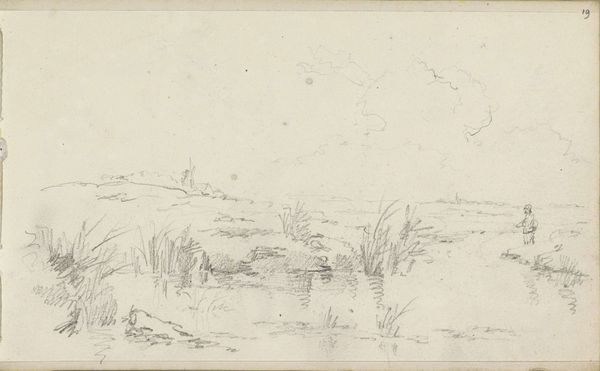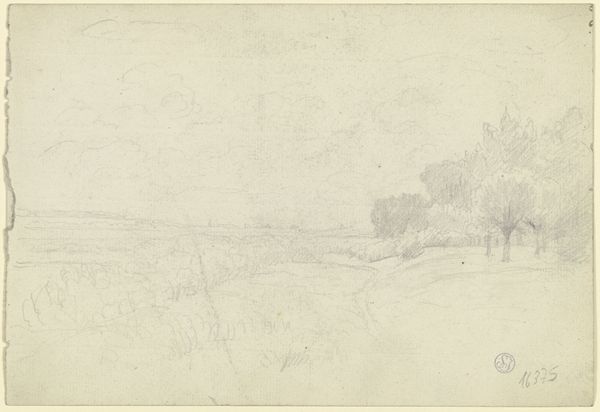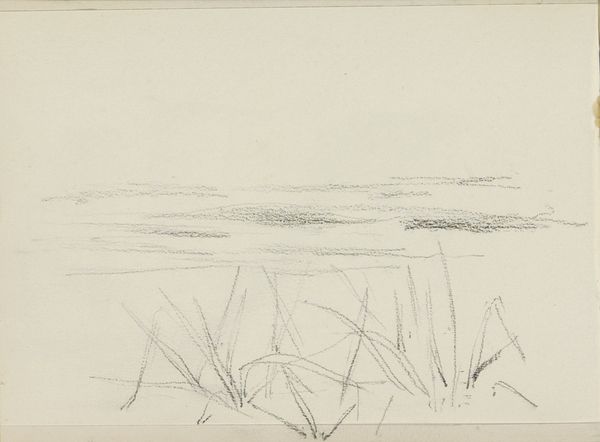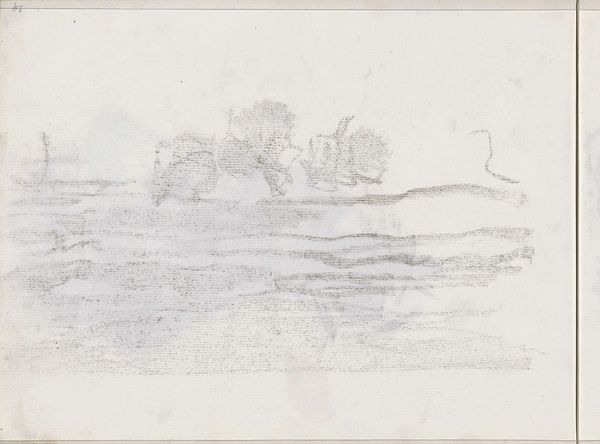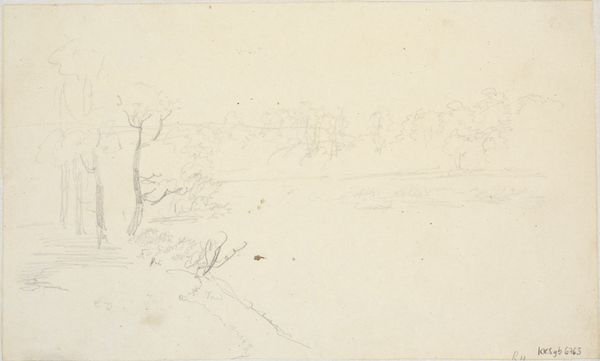
drawing, pencil
#
pencil drawn
#
drawing
#
landscape
#
etching
#
romanticism
#
pencil
#
northern-renaissance
Dimensions: 182 mm (height) x 305 mm (width) (bladmaal)
Curator: What strikes you first about this rather understated landscape drawing? Editor: There's a delicate melancholy to it, like a memory fading. It's so faint, rendered only in pencil. Almost dreamlike. Curator: That sensitivity definitely resonates with its Romantic era origins. This piece, titled "View of a Lake with Wooded Shores," was created by Dankvart Dreyer sometime between 1837 and 1839. Dreyer, a Danish artist, employed meticulous pencil strokes to capture the scenery. It's currently held at the SMK, the National Gallery of Denmark. Editor: It feels very composed, almost symmetrical in its structure. The lake reflects the sky, and the masses of trees on either side feel carefully balanced, lending the image to a peaceful mood. But that pale colour of the surface contributes to that feeling of melancholy that it gives to me, like everything is under water, if that makes sense. Curator: Yes, it's easy to connect this piece with broader cultural currents; during that time, there was a growing appreciation for unblemished nature. A reaction, in part, against industrialisation. These tranquil scenes offered a kind of solace. We also see, in landscape art across Europe, a desire to define national character through depictions of its land. Denmark had its own contribution to this genre, for sure. Editor: You can definitely get the symbolism! Lakes often stand for introspection or even the unconscious. Wooded shores often refer to the frontier, where you find wilderness. The reflection of sky with surface might have also deep philosophical or theological meaning. You know, “as above, so below” to show us the great correspondence through our earth… In some way I’m moved, like by sacred geography. Curator: An insightful reading! I agree; landscape wasn't merely topography; it became a vessel for ideas and emotions. Editor: Well, thanks for pointing out Dankvart Dreyer’s artwork and for walking me through your interpretation. Curator: The pleasure was all mine.
Comments
No comments
Be the first to comment and join the conversation on the ultimate creative platform.
